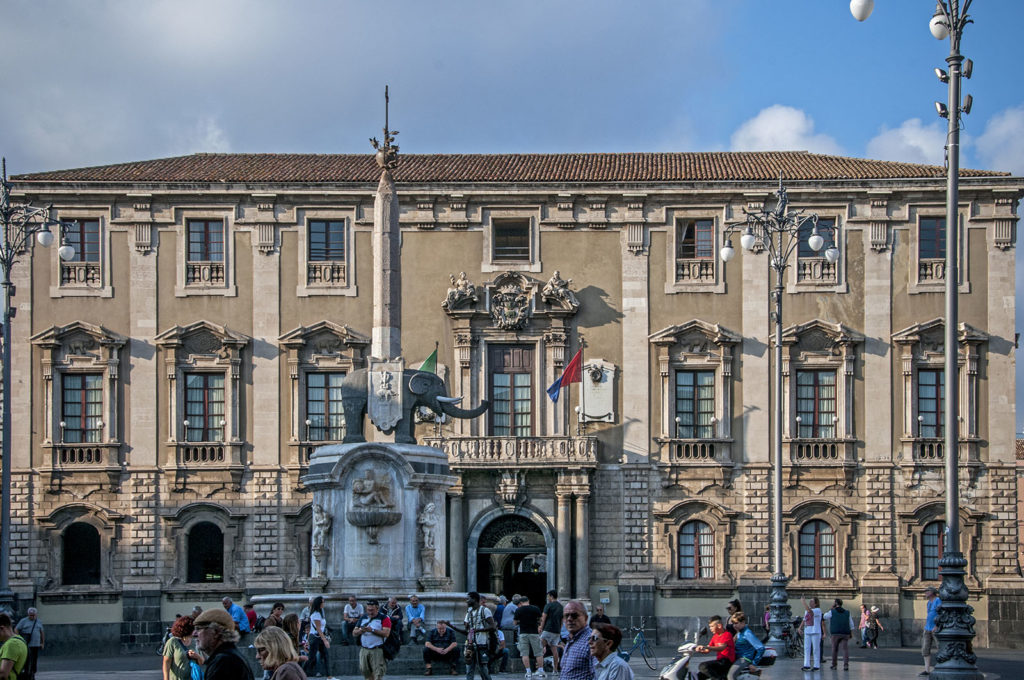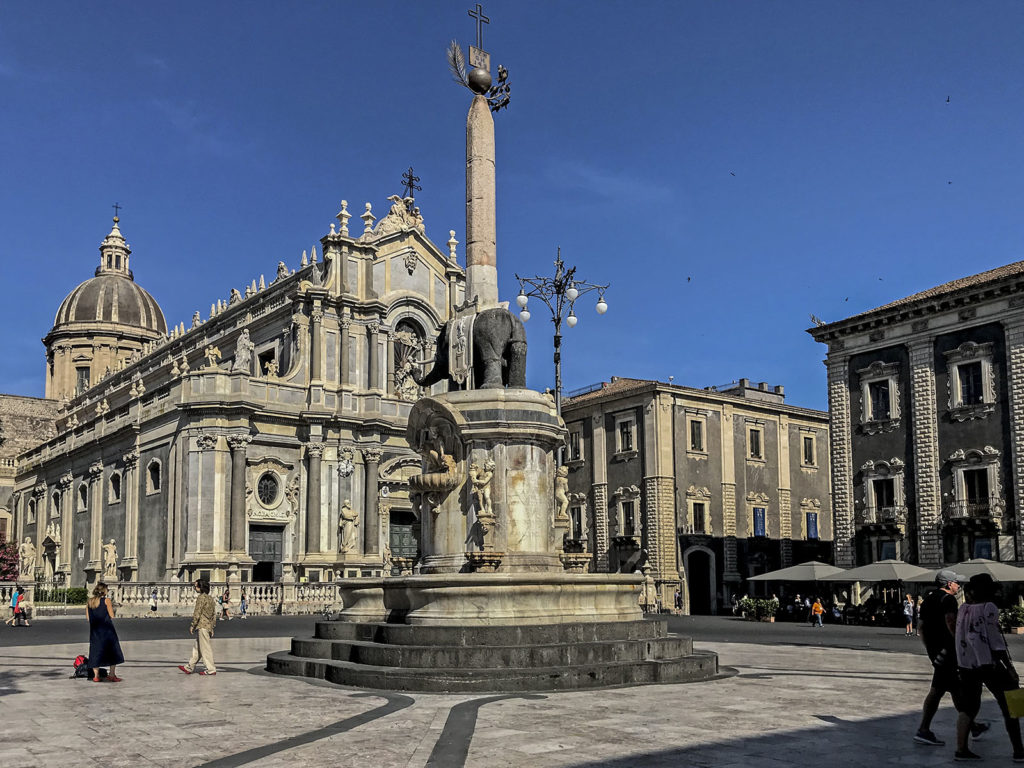Master engineer Giuseppe Vespa designed the project for the new roads of Catania. In collaboration with the administration, he chose Piazza Duomo as the central point.
The new square was wider than the old
Platea Magna
and was where the most important religious and secular buildings were built: the Cathedral of
Sant'Agata
was rebuilt on the remains of the ancient Norman cathedral; the Archbishop’s Palace, the Seminary Palace of the Clerics and the Senatorial Palace were also built here.

In the centre of the square, the
Fountain of the Elephant
was built in 1736 by
Giovanni Battista Vaccarini
as a representative symbol of the city.

It is located at the point where the main roads merge, similar to the Bernini model of the
Elephant and Obelisk
in Rome.
Over time, it was completed with subsequent additions that preserve the memory of different historical periods, also seen in its materials.
The Egyptian obelisk, just over three and a half metres tall, is placed on the elephant’s back and has a globe on top, at the top of which shines a cross with the initials of St. Agatha, the city’s patron saint.
Below the elephant is a pedestal with the statues of the
two rivers
.
The materials used are dark
lava stone
from Roman times and white limestone, which recall the colours of the architecture overlooking the square, defined by scenic backdrops.